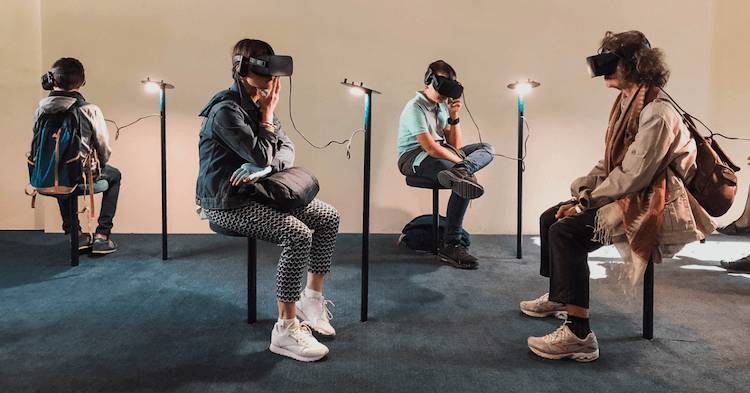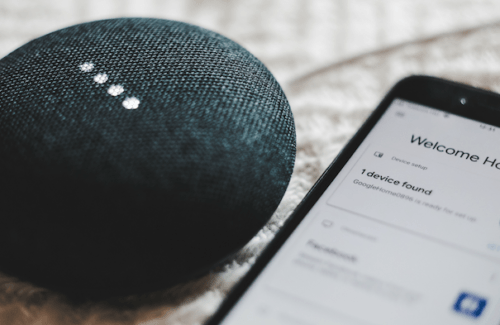
The COVID-19 pandemic will have a lasting effect not only on our economy, but on how we go about our daily lives, and things are not likely to return to pre-pandemic norms. While this pandemic has forced many businesses to reduce or suspend operations, affecting their bottom line, it has helped to accelerate the development of several emerging technologies. This is especially true for innovations that reduce human-to-human contact, automate processes, and increase productivity amid social distancing.
As more data emerges and trends become apparent, there’s plenty of room for businesses to adjust to the challenges brought on by the pandemic and come out stronger on the other end. This post will take a look at 5 emerging mobile trends that businesses should keep on their radar to help them adjust to a post-COVID-19 world.
5G connectivity
The industry buzz surrounding 5G technology and its impact on the next-generation of connectivity and services has been circulating over the last year or so. Yet, the technology still isn’t widely available. 5G is not a modified version of 4G; instead, it’s an entirely new network infrastructure. And while it holds the potential to revolutionize the way mobile networks function, telecom providers have been slow to roll out the technology, offering limited 5G service.
Why? Simply put, telecom providers have been hesitant to build out capacity for 5G technology because they haven’t been confident the demand from consumers is there. However, because of COVID-19, the 5G market may materialize sooner than expected. As large numbers of people have been forced to isolate, an increase in working and studying from home has been stressing networks and creating higher demand for bandwidth.
Back in October, CCS Insights predicted that there would be one billion 5G users worldwide by mid-2023, taking less time than 4G to reach the same milestone. However, as people have now realized the need for faster data sharing with increased connectivity speeds, an acceleration in the rollout of 5G technology to ensure the bandwidth and capacity challenges of existing infrastructure can be addressed, will have us reaching that number a lot quicker.
Cloud computing
Like 5G technology, cloud computing isn’t unheard of, and while cloud-based mobile applications were gaining popularity before the pandemic, their ability to access remote servers, and store large amounts of data without affecting device storage, has proven to be beneficial throughout the pandemic. Based on this, looking at a post-COVID-19 world, cloud technology is likely to receive an increase in implementation across all types of apps.
As the virus spread, people were forced to work from home and online learning models were implemented, the demand for cloud-based video conferencing and teaching has skyrocketed. Various cloud service vendors have actively upgraded their functions and provided resources to meet this demand including the likes of Zoom and Microsoft Teams. In China, Youku and Ding Talk (an all-in-one platform under Alibaba Group) launched the “Attending Class at Home” program to provide students with a secure learning environment and convenient learning tools. The “Online Classroom” function, which is made available for students of universities, primary and middle schools across China without charges during the epidemic, can support millions of students to take online classes simultaneously and has also covered schools in vast rural areas.
Moving forward, businesses and educational institutions are likely to continue to make use of this technology, as student and employee behaviors will change. As demand for this technology continues to grow, implementation of this technology into mobile applications for easier access will be key.
Artificial intelligence (AI)
Post-COVID-19, consumer behaviors won’t go back to pre-pandemic norms. Consumers will purchase more goods and services online, and increasing numbers of people will work remotely. As companies begin to navigate the post-COVID-19 world as economies slowly begin to reopen, the application of artificial intelligence (AI) will be extremely valuable in helping them adapt to these new trends.
AI will be particularly useful for those within retail and supply chain industries. Through machine learning and advanced data analytics, AI will help these companies detect new purchasing patterns and deliver a greater personalized experience to online customers.
AI tools analyze large amounts of data to learn underlying patterns, enabling computer systems to make decisions, predict human behavior, and recognize images and human speech, among many other things. AI-enabled systems also continuously learn and adapt. These capabilities will be extremely valuable as companies confront and adapt to the next normal once this pandemic subsides.
Virtual reality/augmented reality (VR/AR)
Not only has this pandemic increased the number of people using VR headsets to play video games, explore virtual travel destinations and partake in online entertainment, as they isolate at home, they’re also using this technology to seek human interaction through social VR platforms such as Rec Room, AltspaceVR, Bigscreen, and VRChat.
Businesses have also been experimenting with VR platforms to train employees, hold conferences, collaborate on projects, and connect employees virtually. For example, scientists worldwide have turned to Nanome, a VR software platform for molecular design, to collaborate on coronavirus research and potential treatments.
According to eMarketer, VR headset maker, HTC held its first virtual “VIVE Ecosystem Conference” completely in VR. The March 2020 event, which drew 2,000 registrants from more than 55 countries, marked the first physical industry event that was fully replaced by extended reality (XR), an umbrella term that encompasses VR, augmented reality (AR), and mixed reality (MR).
Now that businesses and consumers know the extent to which this technology can be used, we are likely to see more virtual conferences and human interactions as our new normal sets in.
Voice-tech in mobile applications
As consumers are becoming increasingly concerned that their mobile devices (which are touched more than 2,600 times per day) can spread coronavirus. As the fear of spreading germs grows, so will the use of voice tech, which can reduce the number of times one touches any surface, including our mobile devices.
A December 2019 survey from Comscore MobiLens Plus found that US smart speaker owners are already using their devices to ask general questions, stream music, and get updates on sports, traffic, and weather, among other things.
Voice usage will continue to increase and extend to other smart-home components implicated as major germ hubs. As more TVs and entertainment components, light switches, appliances, plumbing fixtures, and alarm systems incorporate voice control functionality, there will be less need to touch them.
Final Thoughts
The aftermath of COVID-19 will likely be similar to other global crises, in that it will greatly accelerate several major trends that were already well underway before the pandemic. As companies begin to shift their focus towards recovery, they must continue to invest in the digital transformation initiatives this pandemic likely forced them to adapt by continuing to leverage mobile technologies. By staying up-to-date on emerging technologies such as the ones listed above, businesses will position themselves to get ahead when all this abides. As we’ve learned, businesses that can shift technology capacity and investments to mobile platforms will mitigate the business risks associated with the COVID-19 pandemic and keep their companies running smoothly now, and over the long term.
To gain more insight into mobile app development trends and enterprise mobility, read Clearbridge Mobile’s recent study – the 2020 Enterprise Mobility Trends Report











